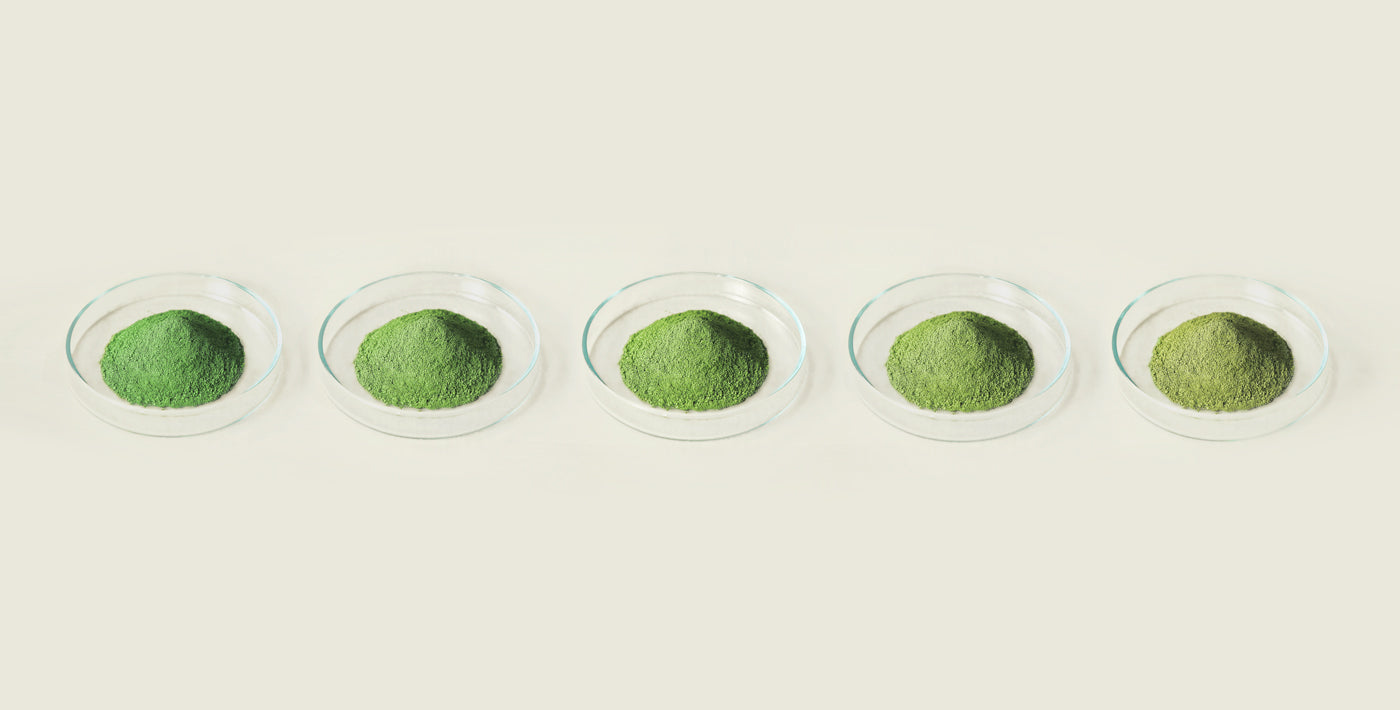Matcha can be classified into two broad grades: Ceremonial Matcha, which generally describes matcha grades appropriate for use in traditional tea ceremonies, and Culinary Matcha, which describes matcha grades suitable for use as an ingredient in drink or dessert recipes. Parallel to the world of wine, ceremonial matcha can be compared to fine, drinking wine while culinary matcha can be compared to cooking wine.
Ceremonial matcha, like fine wine, is delicate in taste and are highly prized for the subtle nuances in their flavour profiles. Ceremonial matcha is suitable for brewing on its own with water or with a very small amount of milk. Using ceremonial grade matcha as a cooking ingredient is similar to pouring an expensive bottle of Echezeaux into a pasta sauce — all the delicate flavours will be lost and it’s not economically sensible.
Culinary matcha, on the other hand, is more robust and bitter in flavour. Using the same analogy, drinking culinary matcha on its own is similar to drinking a bottle of cooking wine — it will not taste pleasant. However, when used in recipes, culinary matcha possesses the intensity required to shine through other complementary ingredients. Thus, culinary matcha is generally used for matcha drink and dessert recipes ranging from matcha lattes, smoothies, ice cream, to matcha chocolate, and other culinary creations.
In terms of the differences in the growing and manufacturing process between ceremonial and culinary matcha, there are some key differentiating factors below:
Harvest
Ceremonial matcha will only come from the Spring Harvest (1st Flush) around the end of April or beginning of May; culinary matcha can also come from a second harvest, whose quality is slightly lower.
The Location of the Tea Plants
Ceremonial matcha will be picked from the younger 'virgin' tea leaves on the upper part of the tea plants (younger leaves will be softer and sweeter); whereas the culinary matcha comes from the lower part of the tea plants.
Filtering Process
Ceremonial matcha will only contain just the 'softest' (and hence sweetest) part of the leaves; the harsher 'stems' and 'veins' (which can taste bitter) are all filtered out. Culinary matcha can contain these harsher parts of the leaves.
Grinding Process
Ceremonial matcha are ground manually using a granite stone grinder in a traditional way. This is a very slow process; taking up to 1 hour to grind a small 20g tin of matcha powder. Culinary matcha are generally pulverised using metal balls in a larger machine.
Different Grades of Matchaeologist Matcha
We produce 3 grades of ceremonial matcha (Misaki, Matsu, Meiko) and 2 grades of culinary matcha (Midori, Mirai). We recommend the following matcha grades for each application:
Matcha for Tea: Misaki™, Matsu™
Matcha for Blended Drinks: Meiko™, Maya™
Matcha for Desserts: Midori™, Mirai™
In sum, if you’re looking to savour the pure taste of matcha or enjoy matcha tea in a traditional way, we recommend the Misaki™ or Matsu™ grades. If you generally use matcha in blended drinks such as matcha lattes, we recommend the Meiko™ grade. For use in recipes, we recommend the Midori™ or Mirai™ grades. Please refer to Shop by Use for more information.
Additional details and further breakdown on the differences between each grade of our matcha are also summarised here.
While there are lower grades of matcha available in the market, we at Matchaeologist believe that the quality of matcha should never be compromised. By selecting an appropriate grade of matcha according to your use, you will be able to make the most of your matcha-making experience.


